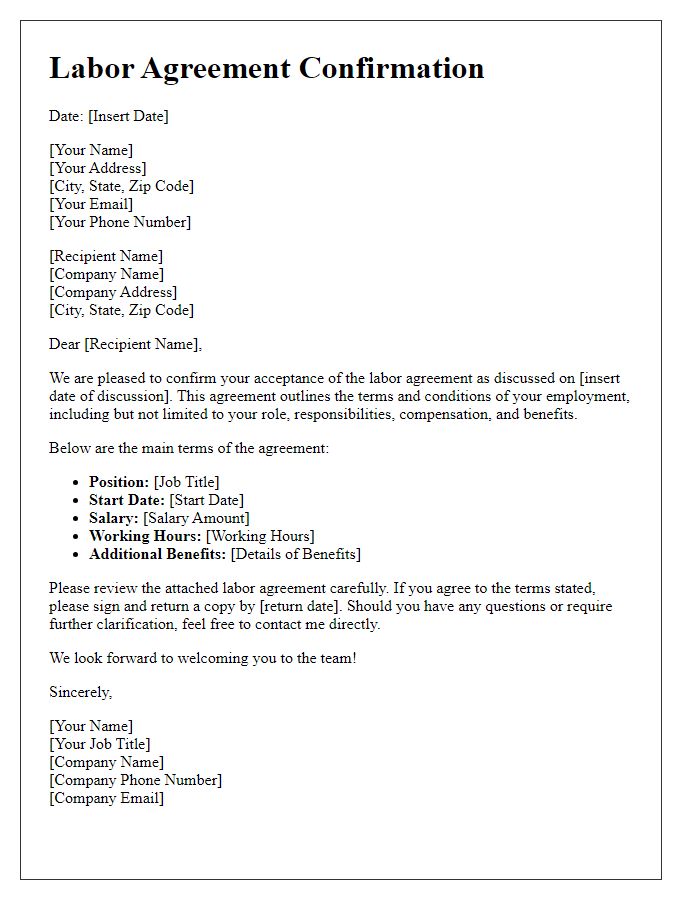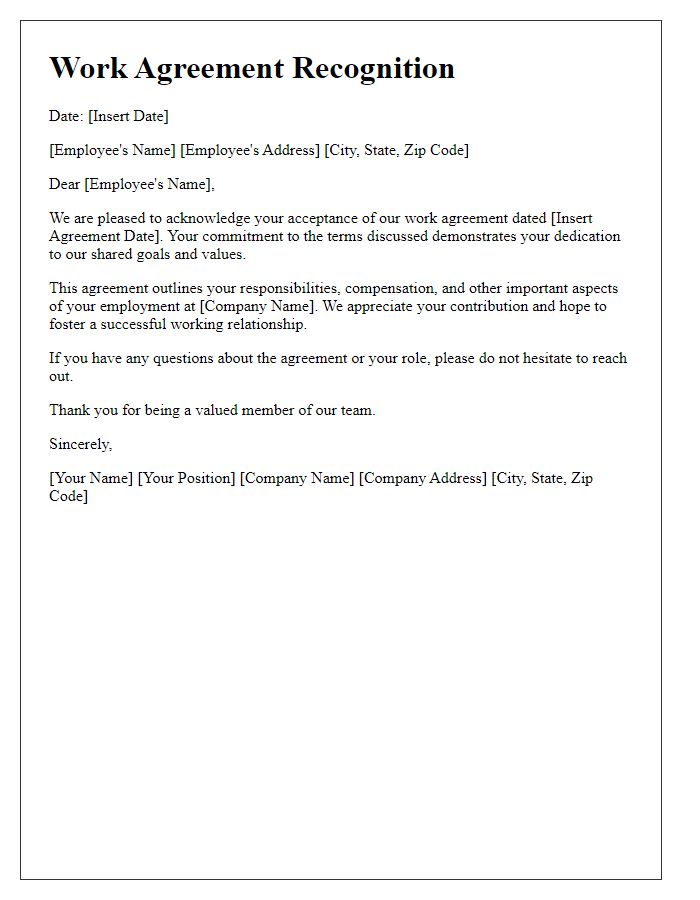When it comes to formalizing a labor agreement, clarity and mutual understanding are key components. An acknowledgment letter serves not only as a confirmation of the terms agreed upon but also as a foundation for a positive working relationship. By outlining the responsibilities and expectations for both parties, this letter plays a vital role in ensuring transparency and accountability. Interested in learning how to craft the perfect labor agreement acknowledgment letter? Read on for a detailed guide!

Clear acknowledgment of receipt and understanding of contract terms.
The labor agreement acknowledgment signifies the employee's recognition of receiving the contract detailing terms and conditions of employment, including but not limited to salary, benefits, work hours, and workplace policies. This acknowledgment is crucial for legal compliance, ensuring both parties, the employer and employee, have a mutual understanding of job expectations, rights, and obligations under labor laws. Furthermore, it reinforces the importance of workplace standards and creates a foundation for a transparent working relationship. Each employee is urged to retain a copy of this signed acknowledgment for personal records.
Personal and company details (names, positions, dates).
A formal acknowledgment of a labor agreement includes essential details such as personal and company information, emphasizing clarity and compliance. The document typically lists personal identifiers, including names and job titles, such as John Smith, Senior Engineer, and Emma Johnson, Human Resources Manager. Company details must encompass the official name, XYZ Corporation, along with the business address in New York City, clearly establishing the employment context. Dates of the agreement's signing, for example, January 15, 2023, need precise mention to determine the effective engagement period. This structured presentation ensures mutual understanding and legal recognition of roles within the organization.
Summary of key employment terms (salary, hours, responsibilities).
A labor agreement acknowledgment outlines essential employment terms, providing clarity for both employer and employee. The agreed-upon salary, often expressed as an annual figure (for example, $60,000), establishes compensation expectations. Work hours typically follow a standard schedule, such as 40 hours per week from Monday to Friday, with stipulations for overtime where applicable. Responsibilities encompass specific job duties, such as managing projects, collaborating with colleagues, and meeting deadlines, ensuring that employees understand their roles within the organization. Clear acknowledgment of these terms promotes transparency and sets a foundation for a productive working relationship.
Signature lines with names and date spaces.
Labor agreement acknowledgments serve to formalize understanding and acceptance of the terms between employers and employees. Such documents typically include clear sections for parties involved, detailing the agreement specifics and the obligations of both sides. To authenticate the contract, signature lines require the names of signatories, providing legal validity. Additionally, date spaces ensure the acknowledgment reflects the exact time the agreement was accepted, aligning it with relevant labor laws and regulations, enhancing clarity and compliance. These elements collectively protect the rights of both parties and establish a mutually beneficial work relationship.
Statement of confidentiality and compliance with company policies.
Acknowledging a labor agreement underscores the importance of maintaining confidentiality regarding sensitive company information. Employees must comply with established company policies, which govern behavior, data handling, and communication both internally and externally. This agreement emphasizes adherence to industry standards and legal requirements, safeguarding proprietary information and minimizing the risk of data breaches. Employees working in sectors such as finance, healthcare, or technology must understand the implications of sharing confidential information and the potential consequences of non-compliance. By signing this acknowledgment, employees affirm their commitment to uphold company values and protect its integrity.













Comments